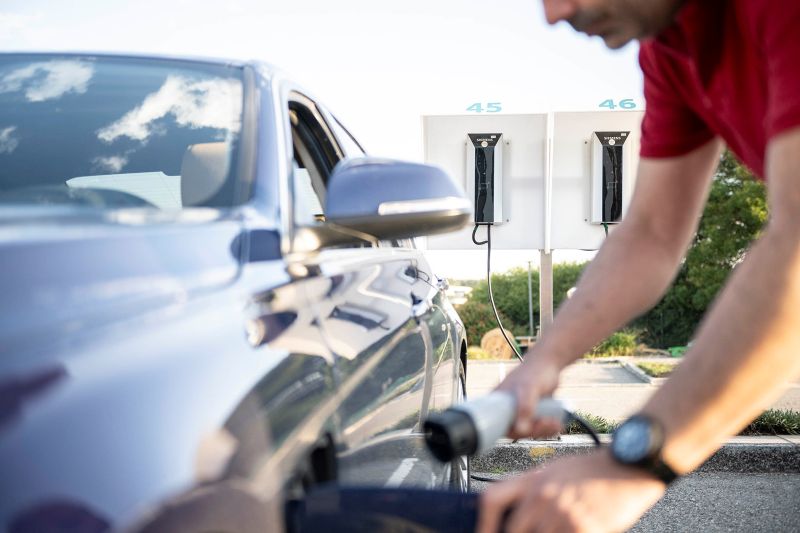by Toby Horne, Siemens Infrastructure Financing Partner, Siemens Financial Services UK

Toby Horne
The decarbonisation of road transport is an important objective in global net-zero strategies, given that road transport consumes almost half of all oil production it’s clear why. Government incentives, mandatory climate targets, and a fundamentally shifting consumer zeitgeist concerning personal carbon footprint reduction have all served to accelerate the take-up of EVs. 10.5 million new electric and hybrid vehicles were delivered during 2022, an increase of 55% compared to the previous year.
Growing eCharging infrastructure
Rapid growth in EV sales requires growth in the national charging infrastructure, with a particular emphasis on rapid public charger availability, if the current capabilities of fossil fuel stations are to be matched. There are many different types of organizations potentially involved in growing the charging station network: fuel companies, utilities, the public sector, and companies with a campus where charging facilities are to be offered to employees. Additionally, hotels, parking lots, company premises, filling stations, street lampposts, university campuses, shopping centres, and supermarkets are already increasingly offering charging points, however the nationwide charging network is simply not growing at the same fast pace as EV adoption. In fact, recent research has shown that in the UK, the figure of available public EV chargers as a proportion of the EV fleet is only 3.7%.
The investment challenge
A typical challenge facing the development of an effective charging infrastructure is the sheer cost of investing in network development. A previous study, estimated that a €104 billion “gap” exists for the global development of EV charging infrastructure for the period 2023-25 alone. This “gap” represents the EV charging infrastructure not yet being acquired with specialist third-party finance – that is to say is still being paid for out of CAPEX (capital expenditure). CAPEX can prove to be inefficient in that it ties up an organization’s capital in depreciating assets and makes it unavailable for other requirements. Acquiring EV charging infrastructure using specialist financing techniques harnesses third-party capital and reserves precious funds for more immediate needs.
New financing models supporting the transition
EV charging units are particularly appropriate for new private sector financing models based on usage, performance, and outcomes. This is because the charging units generate a potential income stream over time that can be harnessed to pay for today’s capital cost of the investment. The provider of the facility can then make a series of regular payments that can be flexibly aligned with the flow of the expected income from the charging units. These financing models range from leasing-based arrangements that help to manage cashflow, through to more complex usage-based arrangements that enable ‘X-as-a-service’ methods of accessing e-charging technology. Hence, the key requirement is for specialist financing tools that can flex to match the expected cash flow generated by the charging points, in some cases making the investment budget neutral.
Financing arrangements from an expert financing partner allow technology vendors to make rapid capital investment affordable and cashflow friendly for public and private sector organisations wishing to invest in EV charging points, and other technologies that support sustainability ambitions. Indeed, anecdotal evidence suggests that the availability of specialist financing options from one technology supplier can often tip investment decisions away from competitors not offering those options. By removing the need for capital spending, specialist finance enables scarce public and corporate capital to be applied to investments that do not generate such an immediate and tangible cash flow.
Conclusion
The predicted rapid growth in electric vehicles around the world – a major contributor to meeting climate change and sustainability targets – will not happen if the electric charging infrastructure does not expand at a similar rate. The sheer scale of capital investment required to build that infrastructure is considerable and is not affordable out of public funds.
Private sector finance (from specialist, tech-savvy financiers) is being deployed to align investment costs with the cash flow that charging stations deliver, making the investment budget neutral. Take-up of such financing options will determine the rate of deployment for the EV charging infrastructure and will play a determining role in the development of the EV market as a whole.
If you’d like to learn more about how specialist finance solutions can support investment, you can download the whitepaper here: http://www.siemens.co.uk/financing-ev-charging-infrastructure




